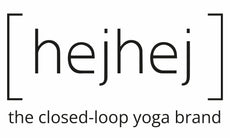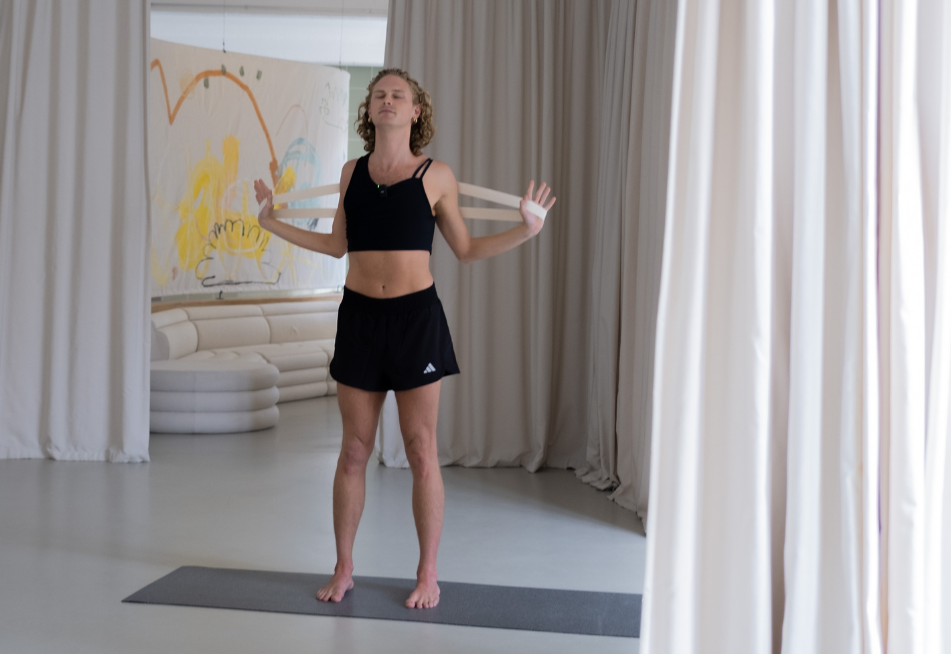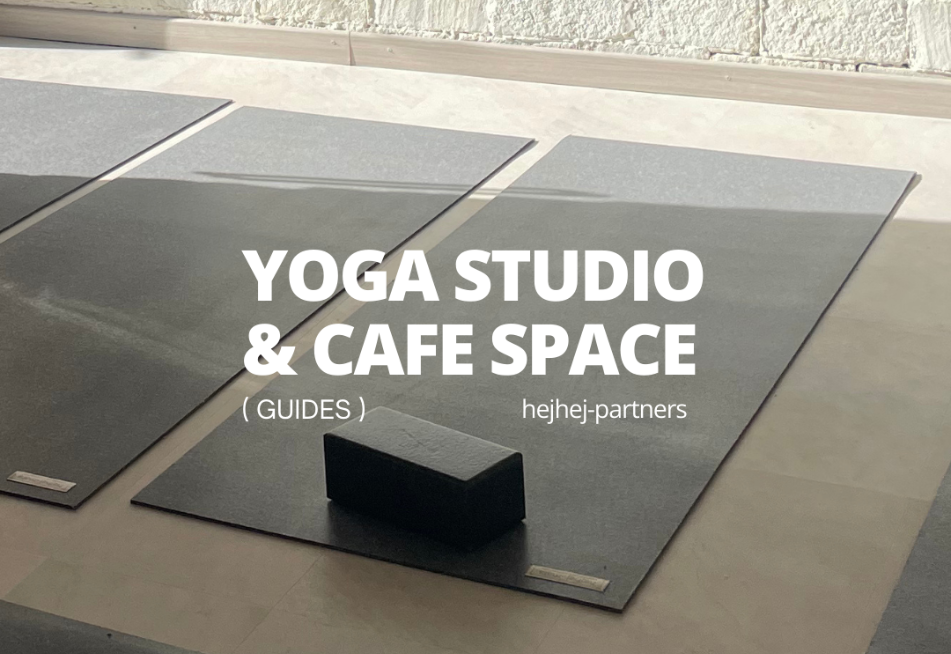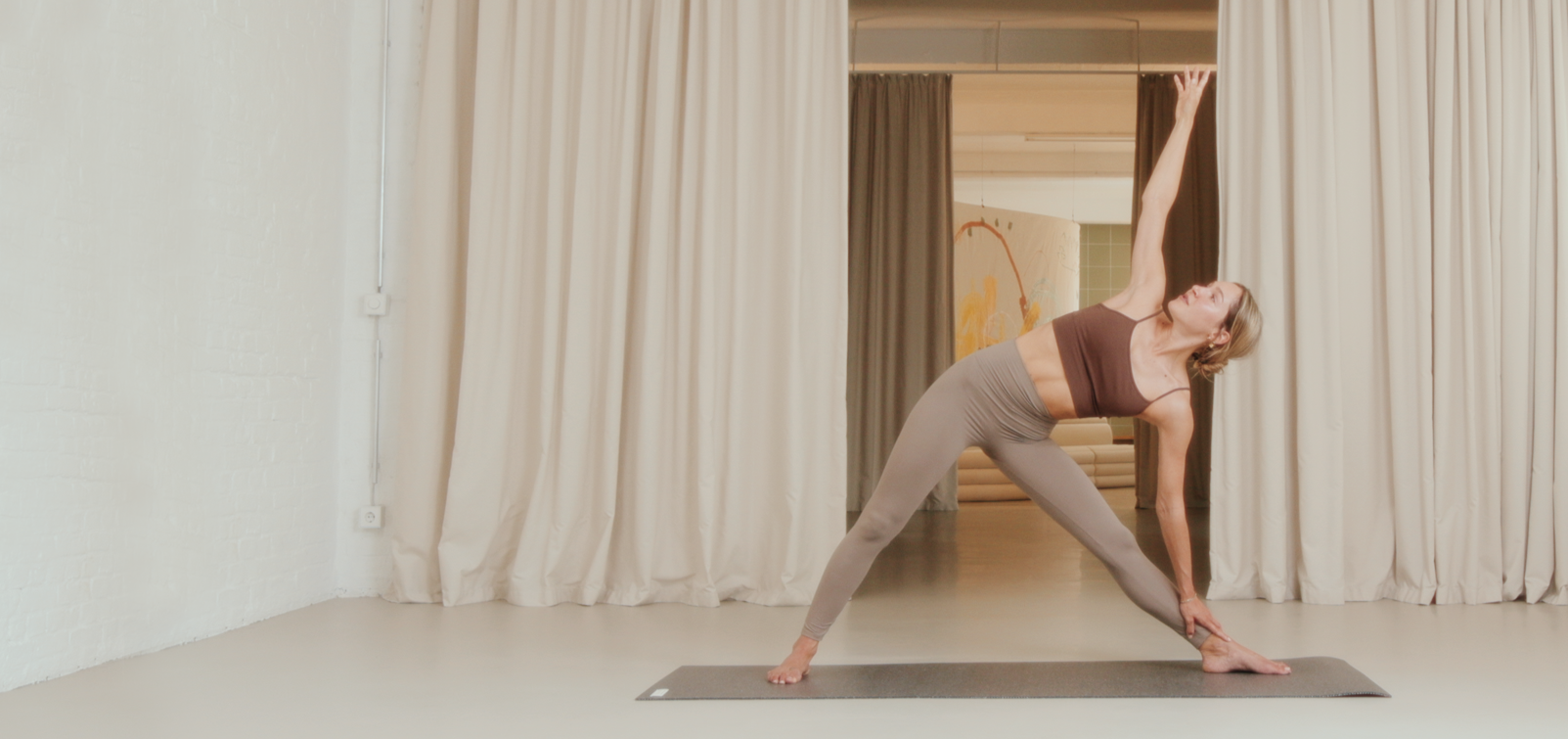hej Alex, could you tell us a little about your journey? How did you get into your practice, and what has influenced you most along the way?
hej hej! I love the opportunity to remember my origins with this practice. I came to yoga through my best friend who encouraged me to go, I was 18, that tumultuous time when you transition from high school to university. I didn’t realize it then, but yoga would always be a practice that would take the pressure off. When I look back on my history with yoga, I see the practice as a point of stillness throughout all of my ups and downs. Particularly, I found yoga at the same time that I also decided I was going to find myself. Growing up as a closeted queer person in Texas, I didn’t know much about myself, who I wanted to be, who I could be, or who I was allowed to be. From that point on, I knew I wanted to say “yes” to all of life, to dive in, to climb, to explore… Yoga was there through it all.
Certainly, my practice has changed with time, but I also believe my yoga practice has seen me change. Yoga saw me move away from home, start college and make new friends. Yoga saw me realize and explore my queerness, and saw me dating and committing to my first serious relationship. Yoga saw my heart get broken. Yoga saw me struggle with an eating disorder, and it saw my recovery. Yoga saw me move to Rome, and saw me quarantined during Covid. Yoga saw my whole career as a school teacher, the times when it lifted me up and when it ultimately broke me. Yoga was always patiently waiting for me to come back to the mat, to clear my vision, to nurture my heart.
So, I think what has shaped me most along the way is having this companionship with my practice that allowed me take my experiences to a further level of understanding. To have yoga as a friend who says “it’s okay,” “I know it’s hard,” “lean into the pain,” “celebrate every piece of yourself,” etc.. So instead of letting the joys run wild and the sorrows pull me down, yoga made every experience a meaningful lesson, whether it be in that very moment or years down the road. Yoga taught me to be available to life, to be cooperative with the inevitable, to accept the uncertainty of possibility and to let go of control… while providing the space I needed to practice self-compassion, to build courage, to laugh, to cry and wallow, to just be.

How does your identity as a non-binary queer person influence your work and the way you approach movement?
I have ultimately realized that my experience as a non-binary queer person, as valid as it is, isn’t unique. I don’t need a special set of tools to “fix” my problems and I don’t need the world’s acceptance or support to feel worthy. The more I thought about myself in the world, the harder it was to heal, to disidentify with the victim mentality. Yoga taught me to see the world within myself instead. At the end of the day, if I identify too closely with my queerness, then I’m ultimately othering myself and other queer people from the interconnectedness that our whole planet shares. My queerness and identity are my favorite things about myself and they help feel very grounded in who I am and how I want to make the world a friendlier place, but the deeper Self beneath it all is where I want to take everyone with my work.
I approach my work from that place of lived experience. My classes and bodywork sessions always have Dharma, a spiritual purpose or theme, and I use my lived experience and my own healing methods to transmit/discover that wisdom. The Dharma always teaches lessons that help us go beyond the identity and into the deeper realm of shared experience, just as I have with my relationship to gender and queerness. Movement, breath, and presence are the container, and the therapeutic narratives I weave into each class are what fill the container. When the blood is flowing and the heart is beating, that’s the best time to practice radical honesty with yourself. When you’re in Savasana and you’ve taken off your armor, that’s the best time to recognize that you and the person next to you are both doing your best, both deserving of loving kindness, both dealing with life and the circumstances you were dealt. Everyone is in need of healing, whether it’s because you’re queer, you have family issues, abuse/traumas, oppression, etc… Everyone needs the compassion to really contact their individual sufferings, and also be able to return to that one thing that really connects us all, Love.
Finally, I spent over half of my life conforming to the hetero-religious norms of Texas. I always felt very different than everyone, and really held down by shame… But now my differences are my greatest strength; where they once were suppressed, they now guide me and my work. I think the main reason why people enjoy my classes is because they are so different. You’ll come to my classes and do things you have never done before, or do familiar things in new ways. I add “diva Dharma” to my playlists because artists like Whitney Houston and Aretha Franklin have power to move emotions and make the heart pump, as well as make us laugh or cry. With reverence for tradition, I use my queerness to change the practice into something very approachable, that allows things to bubble up to the surface in a joyful way.
My teacher Anton Brandt once told me, “teach from a scar, not a wound.” So my goal is to use this practice of movement and spirituality to help everyone turn their wounds into scars, just as it has done for me.
What barriers do you still see when it comes to access to yoga and movement? What would you like to see change in the yoga and wellness community in the future?
Something that surprised me when I became a yoga teacher in Berlin, an incredibly diverse city, is that I still see many of the same complaints I hear about yoga in the west. White-centric, clean girl aesthetic, cultural appropriation, thin privilege, etc… I’m often the only queer person in the room. When I see anyone who is not part of dominant culture walk into the room, I feel a rush of excitement as well as a tenderness to make sure they feel as seen and respected as everyone else.
Just as many of our individual problems can be healed by connecting to the whole, I believe the changes in yoga and movement happen from this larger perspective as well. I’d like to see improved access to these practice in many ways in the future. I’d like to see:
- a society/economy where people actually have the time to attend class rather than work 2-3 jobs.
- hustle culture diminish, so that people can develop the skill and availability to meditate and not think that they “aren’t getting anything done.”
- macho cultures relinquish the attachment to male gender roles and allow a softening for more male participation in these spaces.
- more investment towards People of The World Majority in teaching/hosting roles. Especially so that more people from this demographic feel that this work is also for them.
- a bit more education about cultural appropriation and how to adapt this work with reverence for tradition without upholding problematic aspects from its past as well as modern problems within this work that have been created.
- more education/funding in yoga for disabled, handicapped, or elderly people (and the money for teachers to show up to these spaces without worrying about their paycheck).
- better pay. This is a tough one to fix, but I think a symptom of yoga teachers having to hustle or turn their work into a business is that they have to run towards where the money is rather than run towards those who deeply need these practices (and can’t afford the time/finances).
Am I wishing to greatly? Maybe, but Rome wasn’t built in a day!

We shot some wonderful yoga classes together for our Youtube channel, how does it feel for you to be part of our channel?
It feels like a wish had been granted, I feel very seen. When I began this work, I remember feeling uncomfortable about the clothes I wore, the way I moved, the songs I chose, or just my general obviousness as a queer person and if that made anyone uncomfortable. But then I remembered the importance of visibility – I owe it to other queer people to wear my crop tops and short shorts proudly, to not second guess the colors I wear, to crack jokes about my queerness whether they land or not. I don’t want to take up space, but I want the space to include me. The more queer people that are seen in yoga companies, sportwear ads, or mainstream yoga/wellness media then the more people outside of dominant culture will feel welcome. Thank you so much for being part of that progress and including me!
On our YouTube channel, you can now enjoy a 35-minute restorative yoga sequence with Alex and our hejhej bolster :
What does inclusive space mean to you, and how do you bring that into your classes?
To me, an inclusive space involves the totality of the space, every variable, every moving part, the time before and after classes/sessions, and every individual in the space being dedicated to making it inclusive. I want every aspect of my teachings to come across as reverently and thoroughly prepared with the expectation that any body and any experience will be in front of me when I teach.
I first and foremost try to implement this into my work by building enough skills to teach in various formats and styles so that the content of my work can reach people of all bodies/abilities. I explore and prepare many variations for asana, movements, and even my words so that I’m prepared to make all bodies feel like they belong (making sure that I’m prepared not only for apparent physical issues, but as well as the internal issues like with sexual trauma or abuse victims). I do my best to greet everyone into the studio with a smile, eye contact, and remembrance of their name, and I follow up with them after class about their experience, anything they want to celebrate, and if they have any feedback. I read body language, so when I see that someone might feel shy, out of place, or vulnerable in any way I make sure to have a one-on-one moment with them to make them feel welcomed and safe. And I often take moments in my teaching to guide the class to consider life from the point of view of another, the POV of the person next to them, the POV of immigrants, the POV of the poor or homeless, so that even the internal spaces of the mind and heart, not just the external space of the studio, are inclusive of others as well.
On your website you write about questions like “How would you move if nobody was watching?” How do you weave these perspectives into your classes?
I feel that there are many groups of people who are always watching their own backs, looking over their own shoulder, constantly second guessing themselves; LGBTQIA+, People of The World Majority (BIPOC), females, people with disabilities, and those in larger bodies… Something that connects oppressed people is that way of life where we’re always trying to conform ourselves enough to be palatable for the people who oppress us, whether it be conforming to our perceived gender, our applied social/familial roles, or not wanting to take up too much space in any way…
So in my work, I want people to feel permission to really cherish the parts of themselves that they hide, to have a space to create a relationship with their body and their identity that’s based on compassion rather than shame, to not have to feel the need to perform in any way. There are a few times per class where I (literally) have everyone close their eyes and move like nobody is watching, to allow themselves to move however they want, to be weird, animalistic, ancestral… anything goes. Because when all the extra layers are removed, when the fear is gone, you can clearly see the Self. You shift from running away from something to running towards something, you shift from living in fear and doubt to living in fun and faith.
Who or what inspires you most in your work?
The biggest inspirations to my work are the people who showed me that things can be different. My teacher Anton Brandt and the rest of the team at The Sacred Fig showed me that this sacred practice of yoga can be honored and revered, while also practiced in a modern, approachable, and queer way – as if by removing the veil of dogma we can really see the heart of the practice and intertwine its roots with our own. The practice of Katonah yoga and its philosophy based on geometry, Taoist theory, TCM, and more, which allows a much deeper relationship with the body in any aspect of life – finding the center between opposites, cross referencing to build volume, the body as a house, etc... And finally, Brooklyn Reardon who also teaches with me at Original Feelings – she is a powerful teacher who is actively uncovering the problems of the ancient and the dilemmas of the new, and gently guiding us to keep asking the important questions and responding to our heart’s answers; the way she and one of her teachers, Bess Prescott, are leading this charge is inspiring.
And then there are the wisdom keepers who I love to read or listen to: Tara Brach, Caroline Myss Ph.D., Ram Dass, Gabor Mate, Ekhart Tolle, and more.
What message would you like to convey to our readers?
Always have this in your heart or in your mind’s eye: “The power of love vs. the love of power.”
The more we consider this, the more it becomes who we are, the power of love. The more you consider this, the clearer you’ll see the changes you want to make and what you align with. The more patient you’ll be with yourself on your path of unlearning and relearning. The more compassionate you’ll be with your past and present circumstances in life, being able to say “I’m doing my best” while nurturing the heart. The more trusting you will be that the Universe will provide for you when you start replacing external power with internal power.
I’ve never had a more clear, certain, and comforting way to walk through life than to always be using this as a mirror to my Self, so that I’m always in union with my highest potential, purpose, and presence.



